Normally this info would be included in my comments on report cards. However, specialists don’t write comments until the next marking period, so I’ve decided to post them here.
Kindergarten:
This fall, the kindergarteners have been doing projects and experiments that combined art and science. They did marble roll paintings, painted with water colors and eye droppers and did an experiment where they put food coloring in milk, then added a drop of liquid soap. As the colors quickly moved and dispersed, the children sketched their observations. We went on several nature walks and talked about the changing seasons. We also spent a little time learning about magnets. Many of the experiments involved making predictions, gathering data and then comparing the two. Whenever possible, the students practiced drawing what they observed. As the year moves on, they will also be asked to include short words or phrases with their drawings.
First Grade:
This fall, the first graders dug up their own worms and used magnifying glasses to observe them. They made observational drawings of the worms and learned how to create a diagram. They learned about the ways that earthworms make our soil healthier and watched how worms use contractions to push and pull themselves along.
The class also talked about how we use our senses to learn more about the world around us. We took nature walks and used our eyes, ears and touch to observe trees on Mike’s Trail. We talked about the similarities and differences among trees and we sorted and classified tree and leaf shapes. We collected items on our nature walks and sorted objects into living and nonliving groups.
Some of the books we read together were: A Tree is Niceby Janice May Udry, My Favorite Treeby Diane Iverson, A Tree is a Plantby Clyde Robert Bulla and Taking Root by Allan Fowler. The curriculum guide I used was Insights: Living Things, which was created by the Educational Development Center and published by Kendall Hunt.
Second Grade:
This fall the Second Graders have focused on two primary topics: snails and learning about Mike’s Trail. In the snails unit they made observational drawings and wrote about what they saw. They used small magnifying lenses and learned how to use and store the lenses so that they would remain free of scratches. The students did teacher led experiments with the snails and also conducted experiments of their own design. They gathered information about the snails using observation, and then discussed what knowledge could be gained from that information.
Mike’s Trail is a nature trail that rambles along the outskirts of the school campus. The students discovered an old self-guided tour brochure made for the Trail back in the 1980’s. The brochure highlights various biological and environmental components along the trail (e.g. tree identifications, animal habitat information, and information about prior uses of the land). The students have requested that, as a class, we visit each location on the self-guided tour and learn as much information as we can! With each visit to the Trail, the students have asked many questions that have led to more research back in the classroom.
